Six of our critic’s favorite new food books
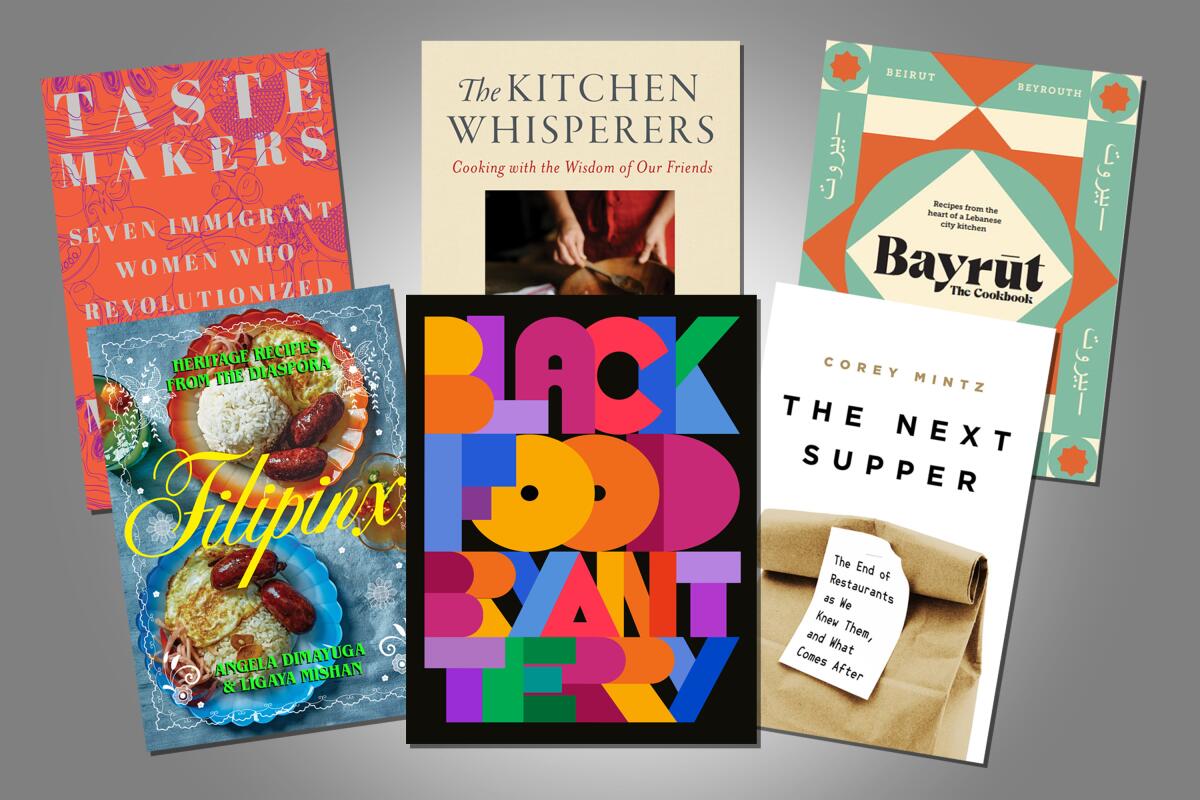
- Share via
At year’s end, with the all-consuming project — our annual guide to L.A.’s 101 best restaurants — behind me and some holiday downtime forthcoming, it’s a pleasure to turn my attention briefly from restaurants to excellent, recently published cookbooks and food-focused literature. There are many, and I’ll continue to highlight standouts in this space in the coming months. Here are six favorites that are as immersive and rousing to read as they are to cook from — ideal for last-minute gifts, or as a personal escape in these exhausting times.
Enjoying this newsletter? Consider subscribing to the Los Angeles Times
Your support helps us deliver the news that matters most. Become a subscriber.
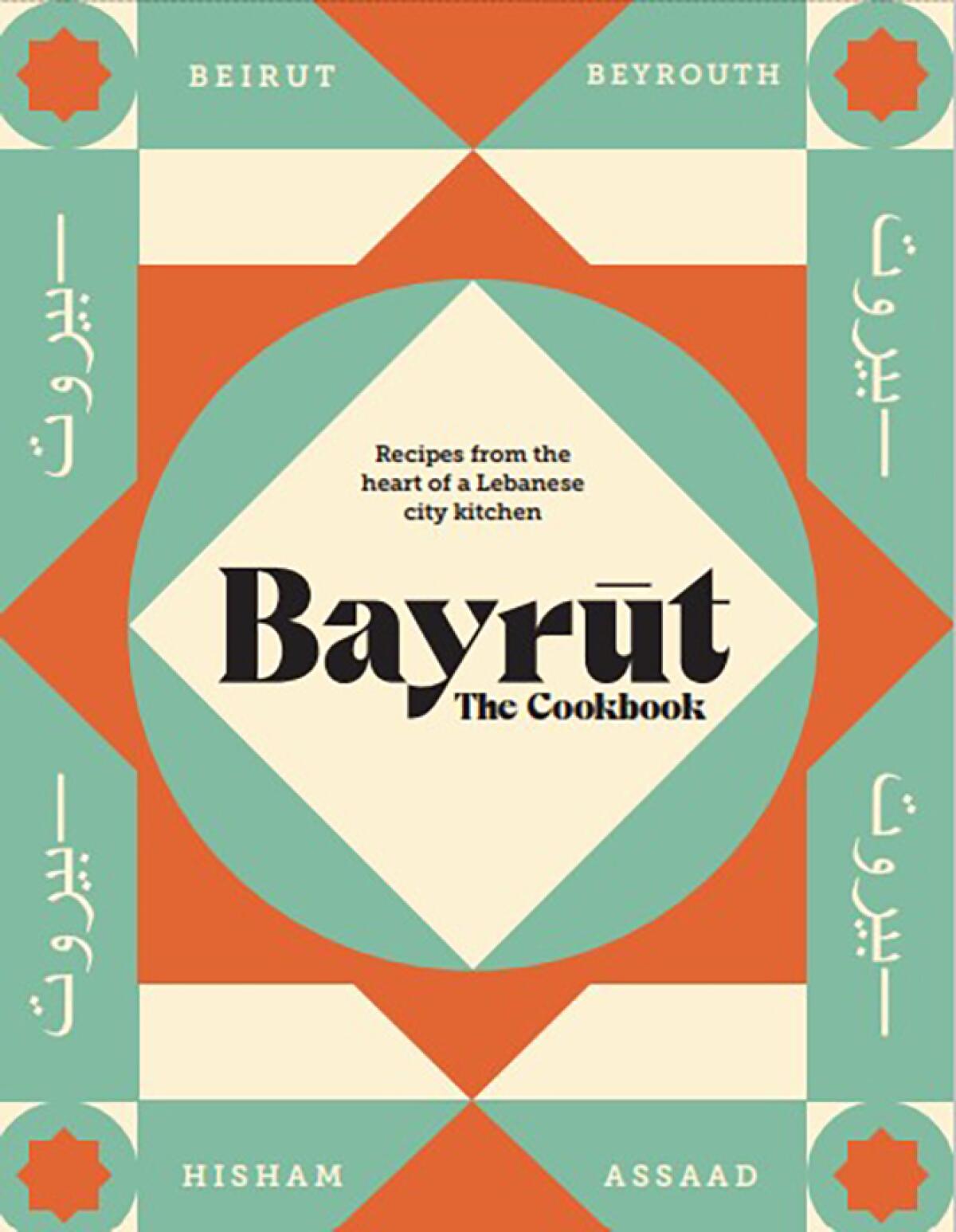
Bayrut: Recipes from the Heart of a Lebanese City Kitchen
Food stylist, photographer and culinary tour guide Hisham Assaad wrote his first cookbook, a celebration and archive of the foodways of Beirut, during two catastrophic years in Lebanon: an ongoing economic and political unraveling that accelerated in 2019 (and continues today), followed by the pandemic and worsened by the explosion in the Port of Beirut on Aug. 4, 2020. Assaad doesn’t sidestep or sugarcoat these realities as he illuminates the cultural fundaments that endure. Reading the introduction, you want to amble the city’s streets with him, studying the pastiche of architecture, maybe stopping for soujouk (Armenian sausage) and ending with a drink in Mar Mikhael. The recipes include the street foods closely associated with Lebanese cooking (falafel, shawarma, savory pies). Even more valuable for home cooks are the sustaining family-style dishes that express the soul of the cuisine. Start with the simple fasoulya wa riz (fragrantly spiced lamb stew with rice) and an autumnal variation of kibbeh made with pumpkin.

Black Food
“‘Black Food’ is a communal shrine to the shared culinary histories of the African diaspora,” Bryant Terry writes as a preamble to the absorbing anthology with recipes he edited. The book, beautifully photographed and illustrated, overlaps essays, poems and dishes from more than 100 contributors; it’s a collection into which you can disappear for a long afternoon, gripped by one clarion voice after another.
Chapters have powerful, self-evident themes (their subjects deepened by the pandemic and 2020’s racial reckonings, when many of the contributions were written): “Migrations,” “Spirituality,” “Land, Liberation and Justice,” “Black Women, Food and Power,” “Black, Queer, Food.” Dive in, perhaps, by flipping straight to the poem “Rice!” by Gail Patricia Myers on page 140, and then jump ahead to Lazarus Lynch on page 210: “Black queer people have spiritual needs, too. … The plate is where we discover who we are, where we’re going and where we’ve been.”
To that end, the recipes will urge you to the stove soon enough — for Nicole Taylor’s cocoa-orange fish, and Isaiah Martinez’s crab and collard “run down” and Selasie Gotse’s Ghanaian crepe cake. I love that the last entry is Edna Lewis’ fresh peach cobbler with nutmeg sauce, the national anthem of desserts.
Terry, a cookbook author (most recently “Vegetable Kingdom,” published in 2020) and chef-in-residence at the Museum of the African Diaspora in San Francisco, also is helming an imprint of Ten Speed Press called 4 Color Books that plans to release several titles by writers of color annually. “Black Food,” the imprint’s first release, marks an enlightening, exhilarating beginning.
Eat your way across L.A.
Get our weekly Tasting Notes newsletter for reviews, news and more.
You may occasionally receive promotional content from the Los Angeles Times.
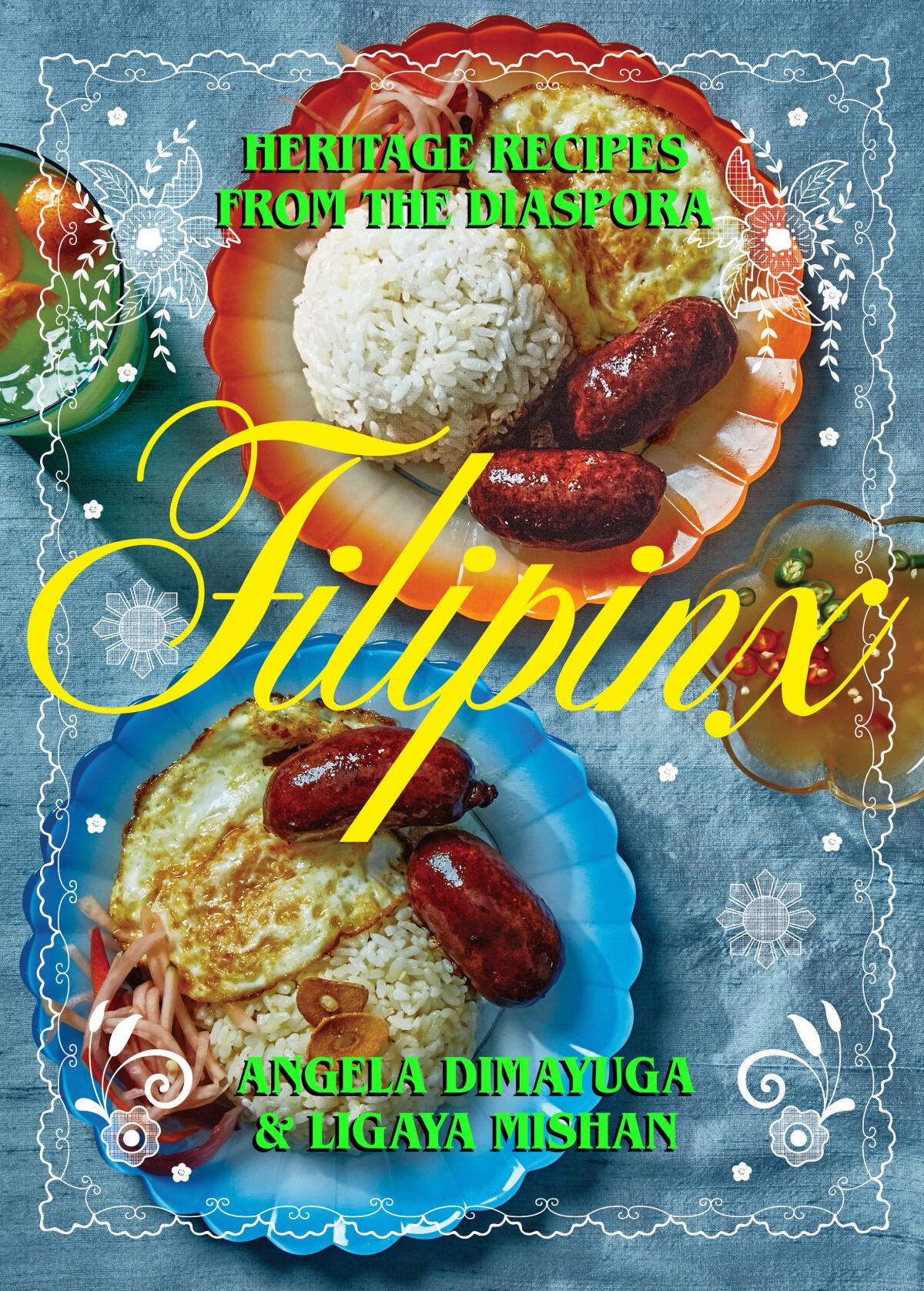
Filipinx: Heritage Recipes From the Diaspora
Last decade, Filipino restaurant cooking finally began to receive long-overdue recognition across the U.S. Accordingly, “Filipinx” is the Filipino cookbook America is finally ready for.
Chef Angela Dimayuga was most notably led the opening team at the Manhattan outpost of Mission Chinese Food; a 2020 Grub Street article detailed reports of the restaurant’s toxic culture during her time in leadership there. She was raised in San Jose; her parents emigrated from the Philippines in 1976. After living across the U.S., she states, “Writing this book has been a form of coming home — a way to try to get to know my family better, and to have them get to know me, as a complete person, beyond the daughter and sister whom I know they’re proud of.”
The book is visually lush: gorgeous images of kamayan (feasts laid out on banana leaves), barbecued pork and spaghetti hot dogs by photographer Alex Lau; color-saturated pages and pluck fonts; a handy seasoning matrix and annotated guides to building icy, polychromatic halo-halo desserts. Headnotes and asides cover history, favorite authors, family memories and odes to rice and fermentation: “I don’t think it’s a coincidence that we use the same word, culture, for our traditions, values and social structures — how we identify ourselves as humans — and for the microbes we watch over and encourage to grow.”
Dimayuga co-authored the book with Ligaya Mishan, who writes for the New York Times and is always the first person I suggest people read when they tell me they’re interested in food writing. “Filipinx” is written first-person in Dimayuga’s voice, and certainly it conveys her exuberant spirit and keen, connective mind. But when I read lines such as “My first music was kundiman, love songs with doom written in their bones,” I can sense Mishan’s poetry and genius moving through the language.
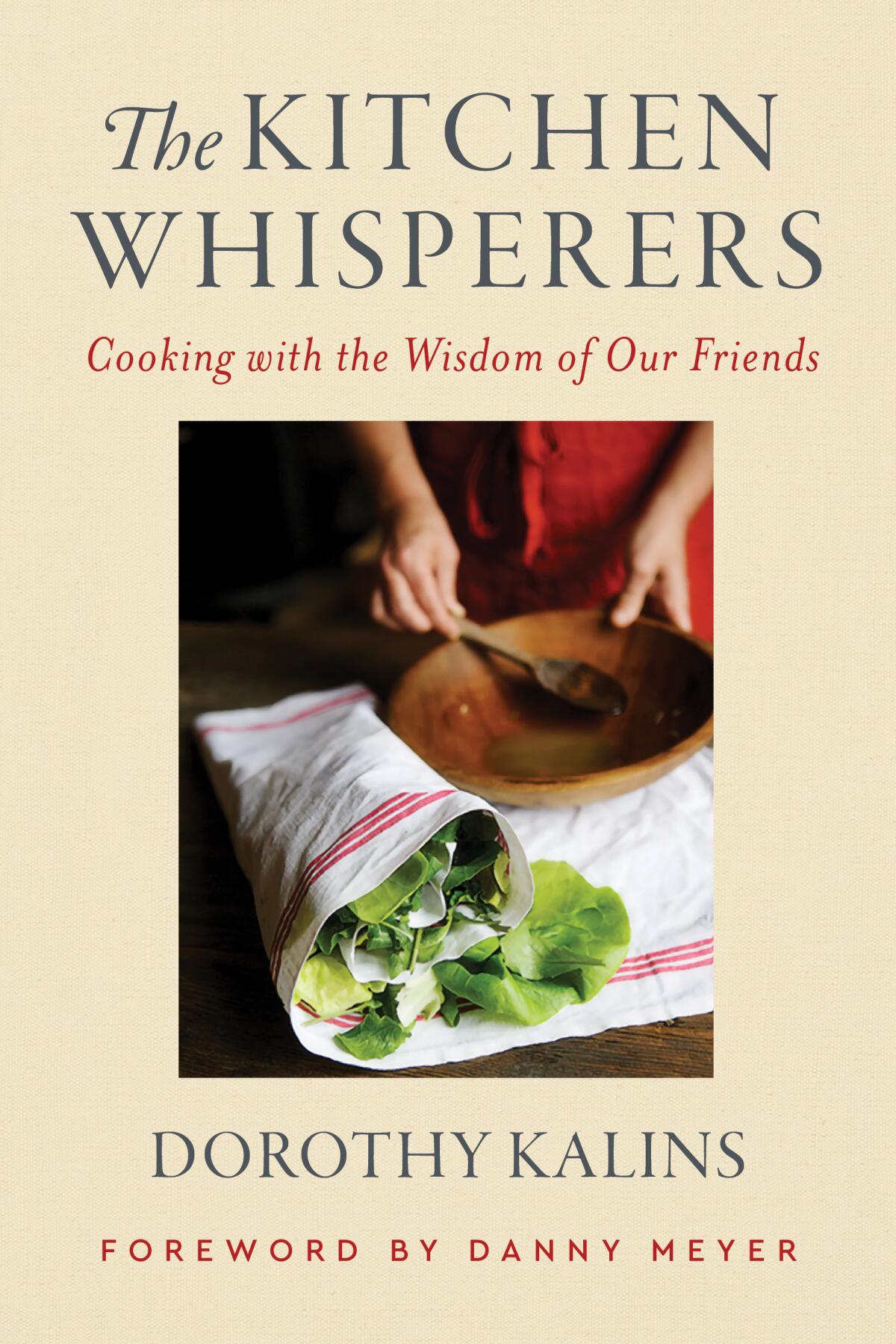
Kitchen Whisperers: Cooking With the Wisdom of Our Friends
Some very fine books have entered the world when accomplished editors take a pause from shepherding others’ words to seize the title of “writer” for themselves.
Dorothy Kalins was a force in the magazine world for decades: She was the first editor-in-chief of Metropolitan Home, an executive editor at Newsweek and, most formatively in the food space, the founding editor-in-chief of Saveur magazine (which began publishing in 1994). Post-magazines, she’s put her skills to use by collaborating on detailed, deeply researched cookbooks, including Michael Solomonov and Steve Cook’s “Zahav: A World of Israeli Cooking.”
In person Kalins is a floodlight of a human being: It’s somehow just easier to make out ideas, connections and paths when you’re around her.
No surprise that in her first book as a solo author — part appreciation, part memoir — she created an impeccable structure: She organizes eloquent chapters around the kitchen lessons she’s learned from family members, chefs, gardeners and cookbook luminaries such as the late Marcella Hazan. “This is not a cookbook; rather, it is a book about what — and who — we think about when we’re cooking,” she writes. She conveys memories using all the senses, whether she recalls Hazan teaching her about “creamifying” risotto with butter and grated Parmigiano before serving, or slowing way down to consider the steps of buttermilk biscuits made by her former Mississippi-based mother-in-law, or untangling the Iraqi origins of sabich, the purse-shaped Israeli pita sandwich staple.
Kalins’ wisdom-sharing meets her aims: A quarter of the way into the book I’m suddenly staring into my kitchen, thinking about which dishes I can make from muscle memory (a lot of Americana desserts and Lebanese one-pot meals) and from whom I want to learn next.
The memoir aspect of “Kitchen Whisperers” is slyer. It reveals a subtle internal tension — a woman who’s spent a lifetime perfecting writers’ copy now figuring out how to weave in her own narrative via the stories of skilled cooks around her. Most poignantly it comes through in character sketches of two of her fellow Saveur founders, Colman Andrews and Christopher Hirsheimer, and the evident pride she still feels in the groundbreaking publication they created (and that currently exists as a much-diminished, online-only entity). “We were our own best critic,” she writes of contentious editorial meetings.
And as a writer, I marveled at the protracted sentence on page 245 about Solomonov’s first baking job — it fills half a page and keeps trailing on to the next. It’s a masterclass in commas, em dashes and clauses. Only a battle-scarred editor could get away with it.
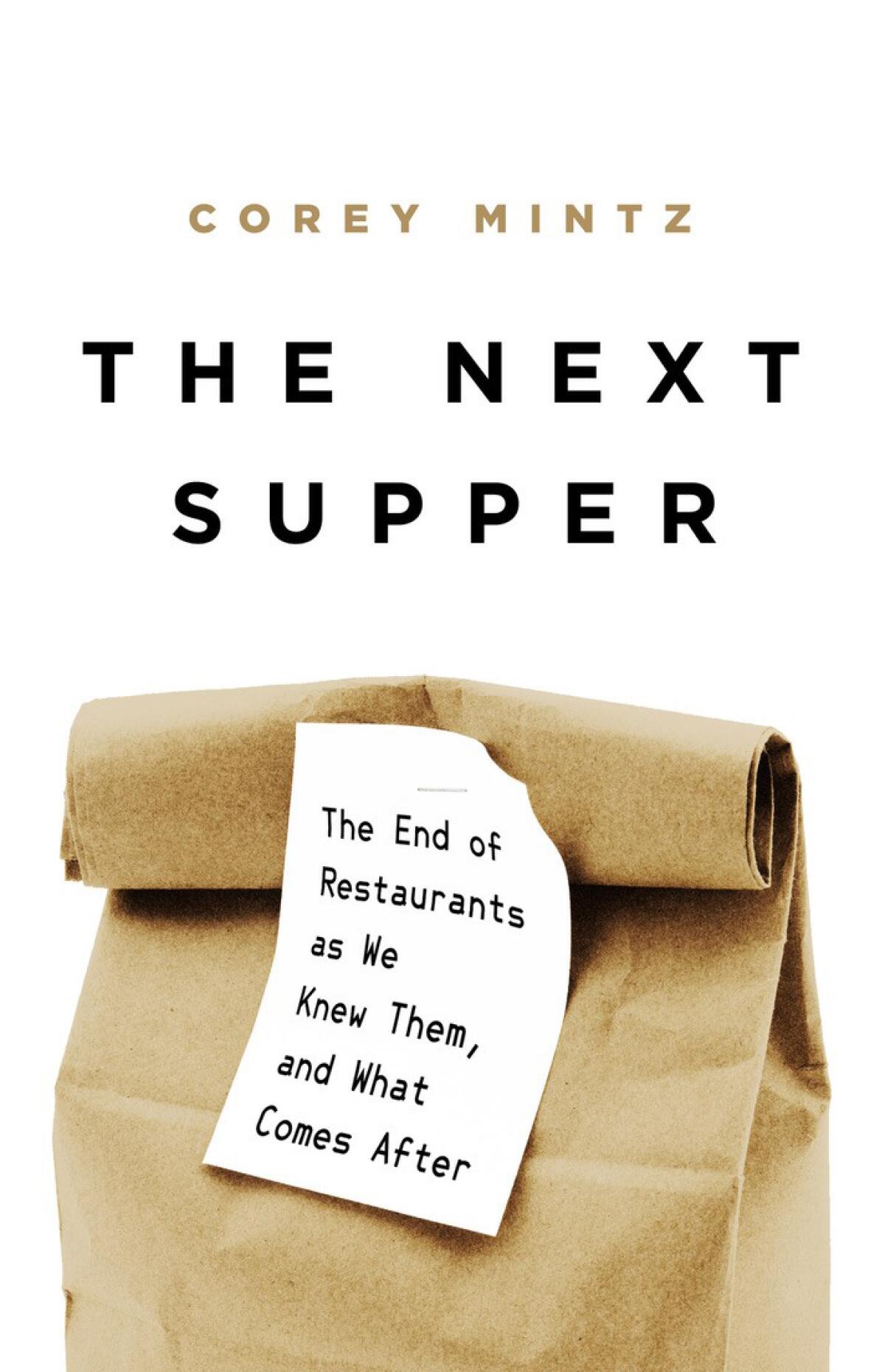
The Next Supper: The End of Restaurants as We Knew Them, and What Comes After
“The restaurant industry, to put it as politely as I can, is ****ed up,” Corey Mintz writes in his book’s introduction, setting up the 300-plus pages of impassioned, thoroughly researched analysis to come in one candid summary. Mintz — a Winnipeg-based investigative reporter who worked previously as a professional cook and restaurant critic — began working on his polemic about the defects inherent in the modern restaurant business pre-pandemic. After March 2020 and the ensuing calamities, pivots for survival and bleak losses, his subject matter took on an even more charged urgency.
“The Next Supper” arrives at a muddy, critical moment. Out of the 2020 crisis arose long-simmering conversations about the flawed American restaurant culture: the lack of safety nets for the low-wage, often undocumented workers upon whose labor the industry runs; the failings of the soldierly brigade system on which restaurant hierarchies (and the abuses that come with them) have long been established and perpetuated; the deep problems with tipping, a wage system rooted in racism that also emboldens sexism and mistreatment.
And yet, craving “normalcy,” diners flocked back to restaurants in 2021, and very little seems to be shifting within the industry to directly address these issues. Mintz predicted as much. “I am worried that, as the pandemic recedes, we will revert to the trajectory we were on before — that in our relief, and as we have done after previous crises, we will snap back into supporting a restaurant industry that is fundamentally broken.”
In eight meaty chapters, he comes at the topic from all angles: the way delivery apps destroy the profitability of bricks-and-mortar restaurants; a call to end the cult of the “chef-driven restaurant”; how hip new dining destinations fuel gentrification; an examination of entrenched food-supply models (he deems supermarkets “the Amazon of the 1930s”); racial bias in menu pricing; and the part the food media play in all of it. You’ve perhaps read about these issues disparately (and increasingly over the last several years) but it’s potent to have them freshly examined right now in one tightly written volume.
And Mintz, in offering examples of chefs and owners working to reshape the system, makes the point again and again that consumers must be part of the change. As other writers, including Food & Wine’s Khushbu Shah, have asserted, it’s time to retire the trope that “the customer is always right” — Mintz outlines why. And if letting go of that notion makes you bristle, this book may have been written expressly for you.
Have a question?
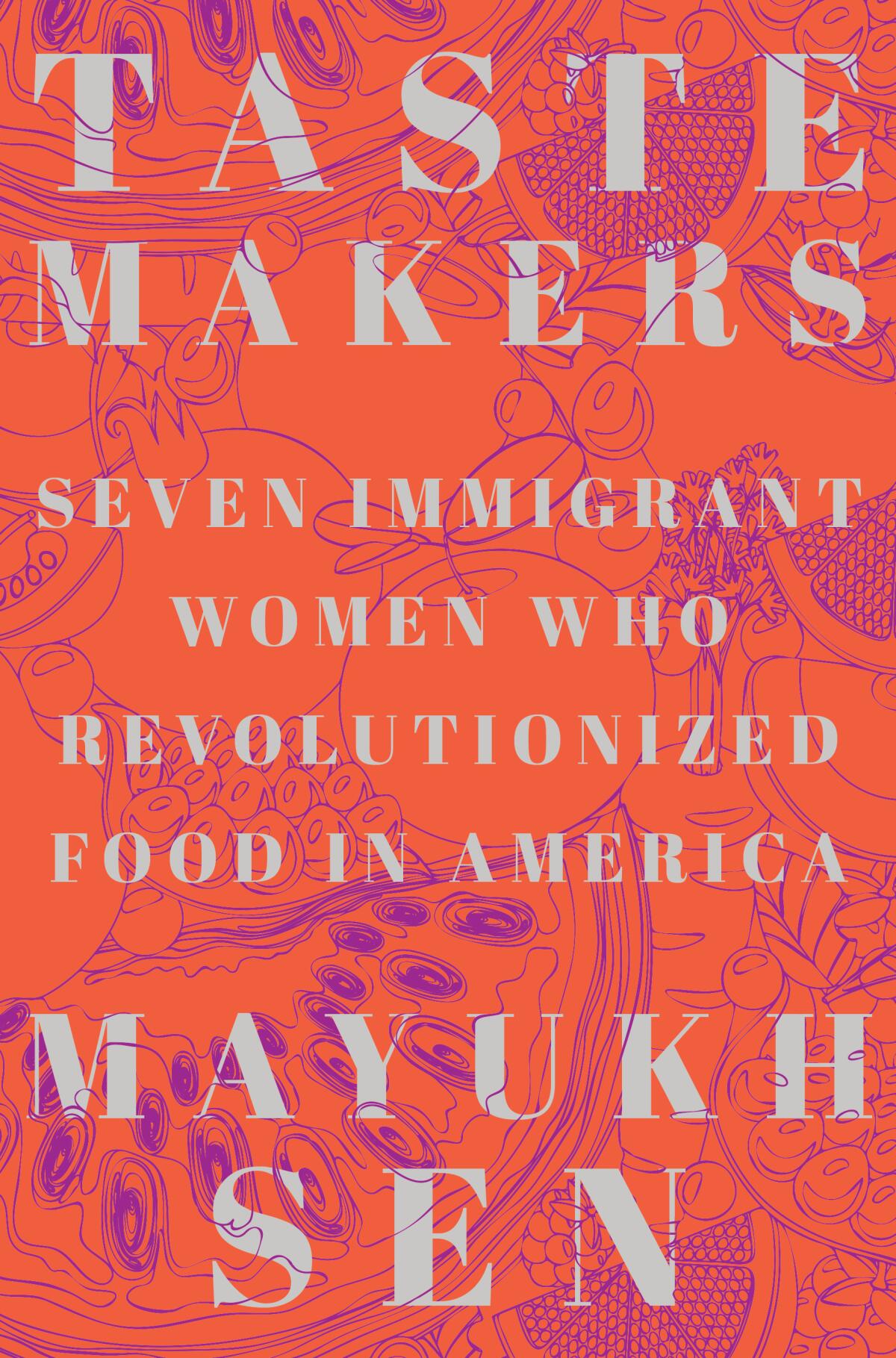
Taste Makers: Seven Immigrant Women Who Revolutionized Food in America
Grit, talent, scholarly rigor, alienation and, above all, the assertion and limitation of identity: Throughout his profiles of seven women who arrived in the United States and helped shape the country’s still-forming modern food culture, Mayukh Sen develops themes like motifs and variations in a symphony. Some of their names have passed from wide public recognition, but he positions these figures and the native cuisines they furthered stateside — Chao Yang Buwei (China), Elena Zelayeta (Mexico), Madeleine Kamman (France), Marcella Hazan (Italy), Julie Sahni (India), Najmieh Batmanglij (Iran) and Norma Shirley (Jamaica) — in a relevant framework, during a time in our country when entrenched narratives of all kinds are rightfully being challenged and reconsidered.
Sen spices his character studies with plenty of context. He details familial battles over the language of Buwei’s seminal “How to Cook and Eat in Chinese,” published in 1945 and translated during its writing by both her daughter and husband (who had very different interpretations of Buwei’s words). The book codified the term “stir-fry” into American cooking vocabulary. Sen also notes the prevailing national mentality in the time of the book’s arrival: “The American mind once gleefully cast Chinese cuisine as an object of cryptic fascination, occasionally straining it with accusations of being too unclean for white Americans to consume.”
“Taste Makers” is a propulsive read thanks to Sen’s meticulously researched storytelling, and he rounds out the profiles with two crucial additions. He includes an interlude — “Julia Child, American Woman” — to contrast the other biographical sketches with America’s ultimate 20th century food celebrity. “Julia possessed a unique qualification that allowed her to be a great teacher of French cooking for Americans: She carried no threat of the outsider,” he writes.
Also, he begins the book with a sharp, concise, unsparing introduction, in which he addresses, among many pressing topics, one obvious question: “Why is a man writing this?” His persuasive, transparent answer is worth reading for yourself.
Where we love to take out-of-town guests to eat in L.A.
Back to restaurants: Acting deputy Food editor Daniel Hernandez spearheaded this fun, right-on-time group project from Times writers and editors. Read about Jenn Harris’ SGV dumpling crawls, Daniel’s go-to restaurants in Southwest L.A., where photo director Kate Kuo takes very close friends and Gustavo Arellano’s Orange County picks ... for starters.

Eat your way across L.A.
Get our weekly Tasting Notes newsletter for reviews, news and more.
You may occasionally receive promotional content from the Los Angeles Times.



